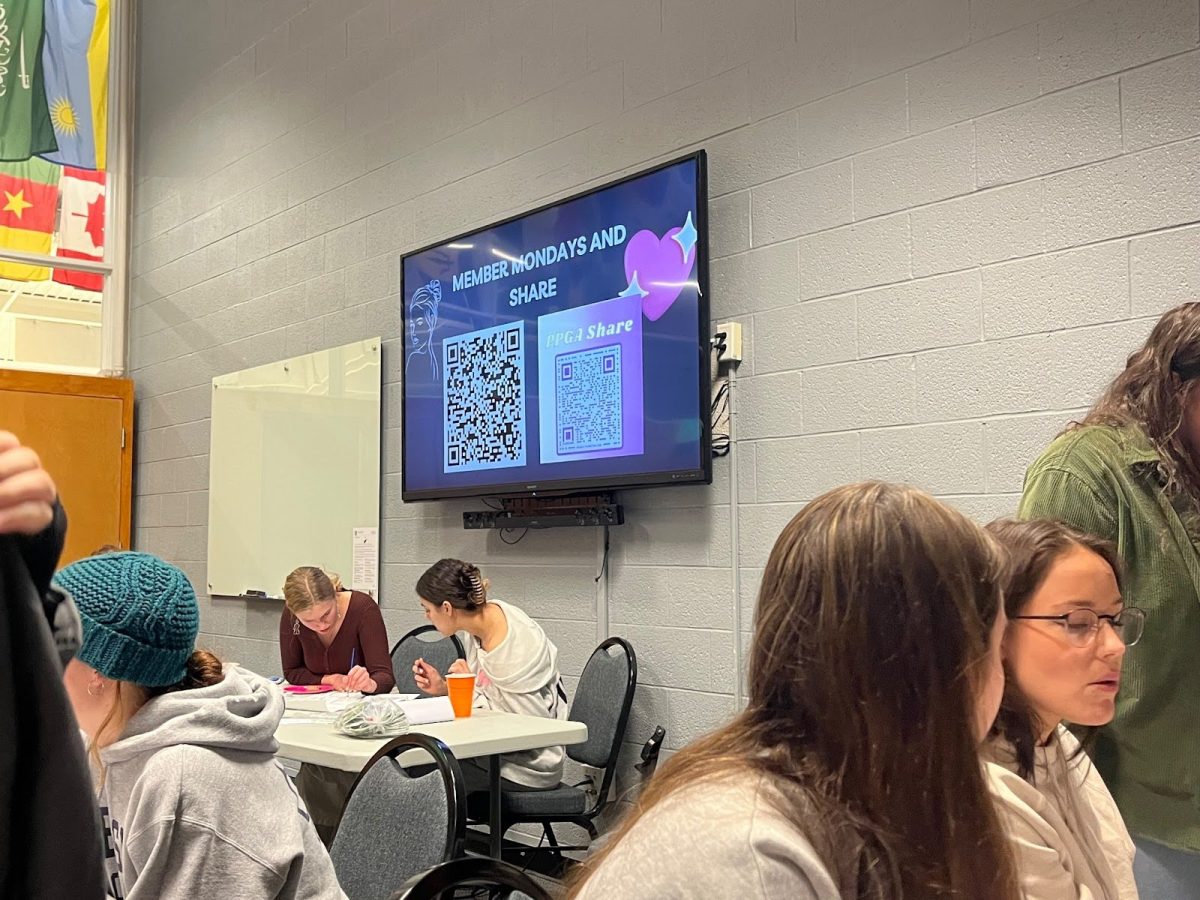By Greg Laudani, Staff Writer
On any given day and at any time, Holloway Common’s dish return is as packed as Libby’s on a Thursday night. And, more often than not, the plates you’ll see are littered with leftovers.
So it is clear to anyone who sees all these unfinished meals that food waste is a prominent issue here on campus.
But how much food do we actually waste? Well, it didn’t take long for dietetic interns at HoCo to discover that the amount is just too much.
On Sept. 22, interns including Stephanie Swanick and Courtney Perrin assembled at the end of HoCo’s dish return from 12-12:45 p.m. to determine how much was wasted during a 45-minute period. They scraped a whopping 84 pounds of waste off plates into a compost barrel.
Alarmed at the excessive waste total they found, interns taped a picture of the 84-pound barrel near the dish return in an attempt to open students’ eyes and hopefully spark change in wasteful dining hall habits.
“There’s so much hunger in America, and look at all the food that’s wasted,” Swanick said. “If we put it in perspective with visuals, we can move the point forward to try to limit waste.”
Cross-contamination at the dining hall also causes waste. People using individual serving utensils for multiple different food items is a worry for HoCo Area Manager Deborah Scanlon. The anxiety comes from concerns about waste, but more importantly, the health of students with serious food allergies.
“One of the big things, this year especially, has been cross-contamination,” Scanlon said. “If someone goes to get a piece of fish and takes the fish spatula out and puts it into the chicken one, now we have to get rid of that whole pan of chicken because if somebody has a seafood allergy, that chicken isn’t safe anymore. That’s a big concern.”
There are signs up in all three dining halls discouraging cross-contamination.
Many students believe that habits involving cross-contamination and excessive portion sizes are not a big deal. But according to Jon Plodzik, UNH’s director of dining, we are all in this together. And while people continuously take more food than they eat, massive amounts of food like the 84-pound bucket continue to be squandered.
“What I don’t think people think about is when we [throw away half a piece of chicken], we don’t necessarily think that there are people in the world starving and would use that chicken for the next three days as a way to sustain themselves,” Plodzik said.
The three dining halls combined go through over 800 gallons of milk a day. However, according to Plodzik, the department’s greatest area of waste tends to be from hand-fruit items, salad and entrée items that come off the main line. Some people do not think much of wasting food at the dining halls because there is such a plentiful variety available every single day. Plodzik aims to bring attention to the fact that minimizing waste is a community effort and that everyone who eats at the dining halls is a part of it.
“What I don’t think people think about is that waste is a cost that every single person on a meal plan bears,” Plodzik said. “If you’re sitting next to someone and they get a big pile of chicken nuggets or pasta and they only eat a third of it — and that happens frequently — you’re paying for that. Everyone is paying for that.”
Food spilling on the counters creates more waste for the dining halls. As a result, HoCo staff members make a constant effort to keep these surfaces clean.
Earlier in the school year, dietetic interns collected 5.5 pounds of waste from wiping down the counters for an hour.
Simple things can be done to prevent counter waste, according to Scanlon. This type of waste is often a result of students rushing to get their food and, as a result, miss their plates with serving utensils. Scanlon wants to remind students to “make themselves important,” and take their time in the dining halls. She believes this approach will help students get more enjoyment out of their experience and will also help to reduce food spillage on the counters and floor.
“Not only from a waste perspective but from a health perspective, gauge your hunger,” Scanlon said. “There are a lot of things students can do to reduce waste, like simply moving your plates over at the counters. They can also go back and get seconds on anything they want, so there’s no rush. Give yourself time to enjoy your meal; you have time.”
And while Dining Services encourages students to think more about controlling food waste, the department itself is taking action in several ways to help the cause. Last summer, UNH Dining purchased a new waste module as part of its food production software called FoodPro.
Dining enters a prediction into the software of how many portions of each meal will be consumed and how much will be wasted. At the end of the day, production managers plug in what was eaten and what was not based on the remaining portions.
FoodPro, intuitive software developed by Aurora Systems of Ohio, then uses this information to calculate trends of how much each item is being consumed over time. Dining can then use these trends to cook a more appropriate number of portions next time.
“Say that we make 800 portions of chicken and only used 750,” Plodzik said. “We record that almost like service records. And as we go along, this intuitive software trends that. So the next time we offer the chicken, it might only call for us to make 760 portions.”
FoodPro was officially implemented in all three dining halls over the summer, and Plodzik is hopeful that it will be a “powerful tool going forward” in the department’s fight against waste.
“It’s not an immediate impact,” Plodzik said. “But the idea is that if we use the software well, it will help us minimize overproduction to begin with, which can be a factor of waste.”
Over the last few years, Dining has cut its desserts into smaller portions in an effort to increase the number of portions fully consumed. It is also looking into using smaller plates for similar reasons, as well.
Everything wasted at the dining halls is pulped and sent to COLSA’s Kingman Farm for 45-90 days until it becomes compost. The compost is then used to grow produce in Dining’s on-campus greenhouses, as well as in flowerbeds across UNH. On average, the department, which spends $10 million a year on food, generates between 400-600 tons of compost every year.
“While it’s nice that we compost all this waste, it still would be better if we didn’t have any waste to begin with,” Plodzik said. “We would prefer to have nothing left.”

























